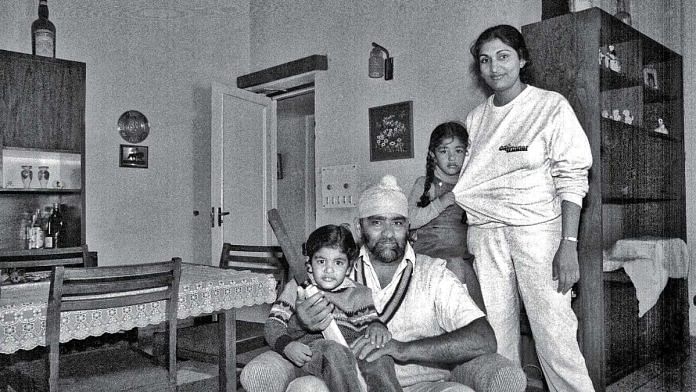Spinners are cricket’s artists. They tease, they draw the batsmen into meeting the ball that never arrives, they mask their intentions, they make the harmless appear deadly, and vice versa. They wear disguises and tempt batsmen just as joyfully as the Sirens tried to tempt Ulysses and his men, and then they lead them to their doom just as surely.
Bishan Singh Bedi used orthodoxy to improvise, to discover new themes and to lull the batsman into thinking he has heard the music before only to have it change pitch and leave him looking foolish. Bedi could pitch six balls on the same spot and make them do different things, or pitch them at different points and make them do the same thing.
Few understood the separate roles the fingers, the palm, the arm, the shoulder, the hip, the leg and the toes played than Bedi. He could alter the position of any of them as he prepared to bowl, and change the delivery.
In a fine action study taken by the photographer Ken Kelly, Bedi is captured in a relaxed tense mood. What is at once apparent is the balance. The ball is held in the fingers, with the wrist cocked – which means that the fielder at extra cover gets to see the seam. Bedi is looking over his right shoulder, the
body beautifully side-on, and the fingers of the non-bowling hand tense. The right thumb on the ball seems to be checking that everything is in place. It is a magnificent picture of a magnificent bowler.
With the ball primed to obey the subtlest of Bedi’s demands (perhaps that is too strong a word – Bedi’s suggestions, then), what did the wicketkeeper watch to decide what the ball would do? ‘It was a joy, keeping wickets to Bedi,’ says Syed Kirmani, who played 88 Tests for India. ‘He could bowl six different deliveries in an over.’ With so much variation on tap, did they work out a system of signals?
I liked Kirmani’s answer: ‘No, no, where is the challenge then? It is like taking an exam where your teacher has given you the question paper a week earlier. I watched Bedi’s wrist and his fingers – that was enough for me. Sometimes the ball did surprising things at the last moment – then I relied on my agility and reflexes to gather it or affect a stumping. The spinner’s job is to lure a batsman out. With his lovely loop and that manner of seemingly pulling the ball back on a string after delivering it, he had the batsman groping. I improved as a wicketkeeper while standing up to the fabulous quartet we had.’
In the middle phase of Bedi’s career, with batsmen conscious of getting stumped, they preferred to play him from the crease.
Gurbachan Singh, a medium pacer in Amritsar, who has known Bedi since he was a boy of twelve or thirteen, told me, ‘God put a ball in his hand.’ He didn’t elaborate; he didn’t need to.
It is tempting to say, in the finest traditions of romantic cricket writing, that God put the ball in Bedi’s hand and told him to ‘Go spin for India,’ but that was not the way it happened.
First, he had to get fast bowling out of his system. It is amazing how the best left-arm spinners – Wilfred Rhodes, Hedley Verity, Derek Underwood and Bedi – all began as fast bowlers, or at least, medium pacers aspiring to bowl fast.
Spin came naturally to Bedi, thanks to a combination of his action, strong fingers and an easy familiarity with the possibilities of variation at the bowling crease. Bedi’s mastery over the calculus of bowling – making the infinitesimal adjustments that made the difference – was total. Spin bowling is never about spin alone; it is about balance and rhythm, and selling dummies.
Bedi practised seven to eight hours a day. Practise was the key. It didn’t matter if there was no one else around, Bedi would bowl at a single stump. When he wasn’t bowling, he would walk around with the ball, spinning it from hand to hand, enjoying the act of spinning.
In studies of expertise, the idea that excellence requires a critical minimum level of practise surfaces regularly. The magic number seems to be 10,000 hours. If you take thirteen or even fourteen as the starting age (Bedi was playing first-class cricket at fifteen), and 200 hours of practice every month or 2,000 hours every year, then in five years, Bedi had already crossed the magic figure. No wonder he was ready for Test cricket at twenty.
Initially, inspired by Gary Sobers and then by Tony Lock, whom he saw in action on the 1961–62 tour, Bedi tried everything: medium pace, wrist spin, back-of-the-hand stuff.
This excerpt from The Sardar of Spin–Bishan Singh Bedi, edited by Sachin Bajaj, has been published with permission from Roli Books



